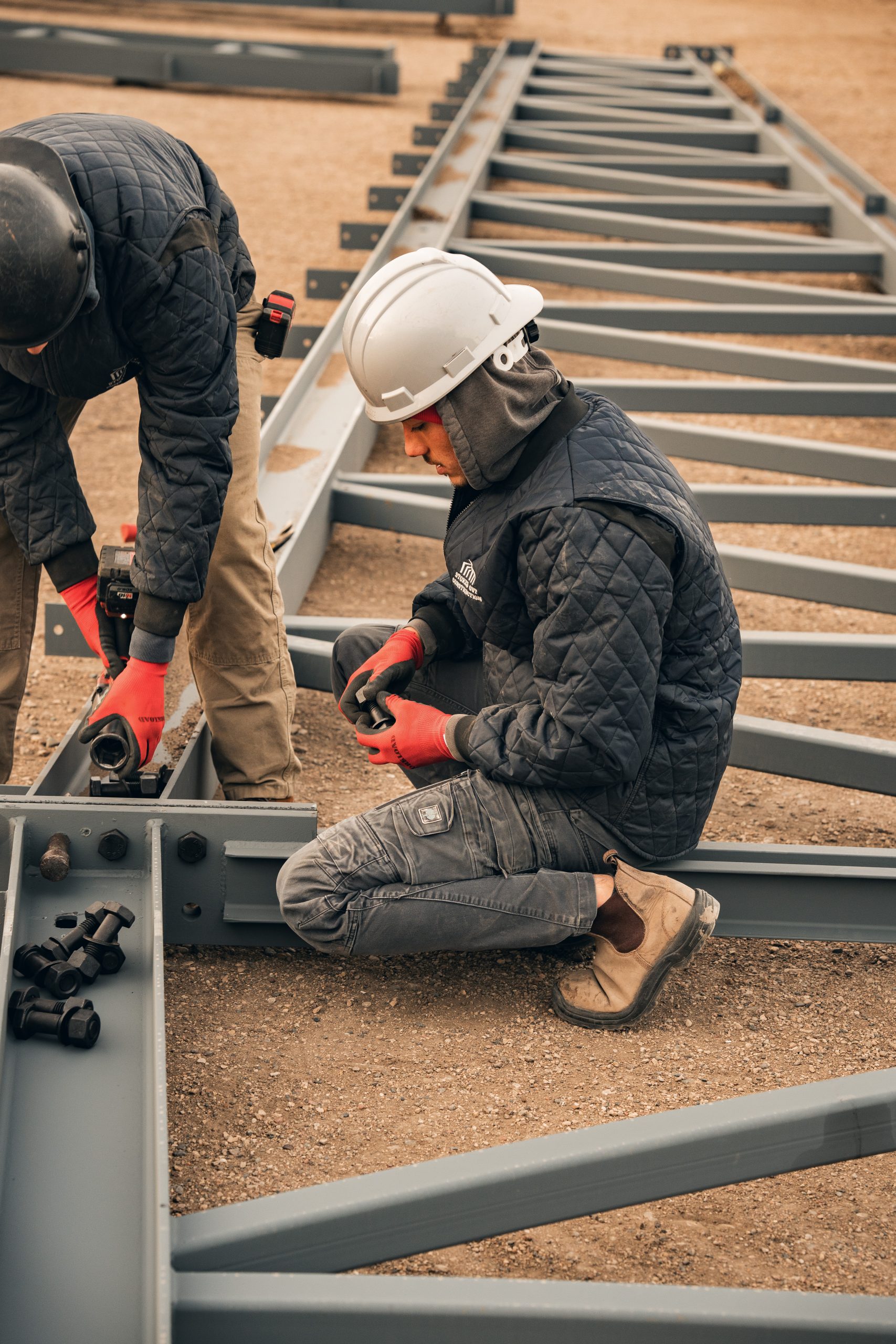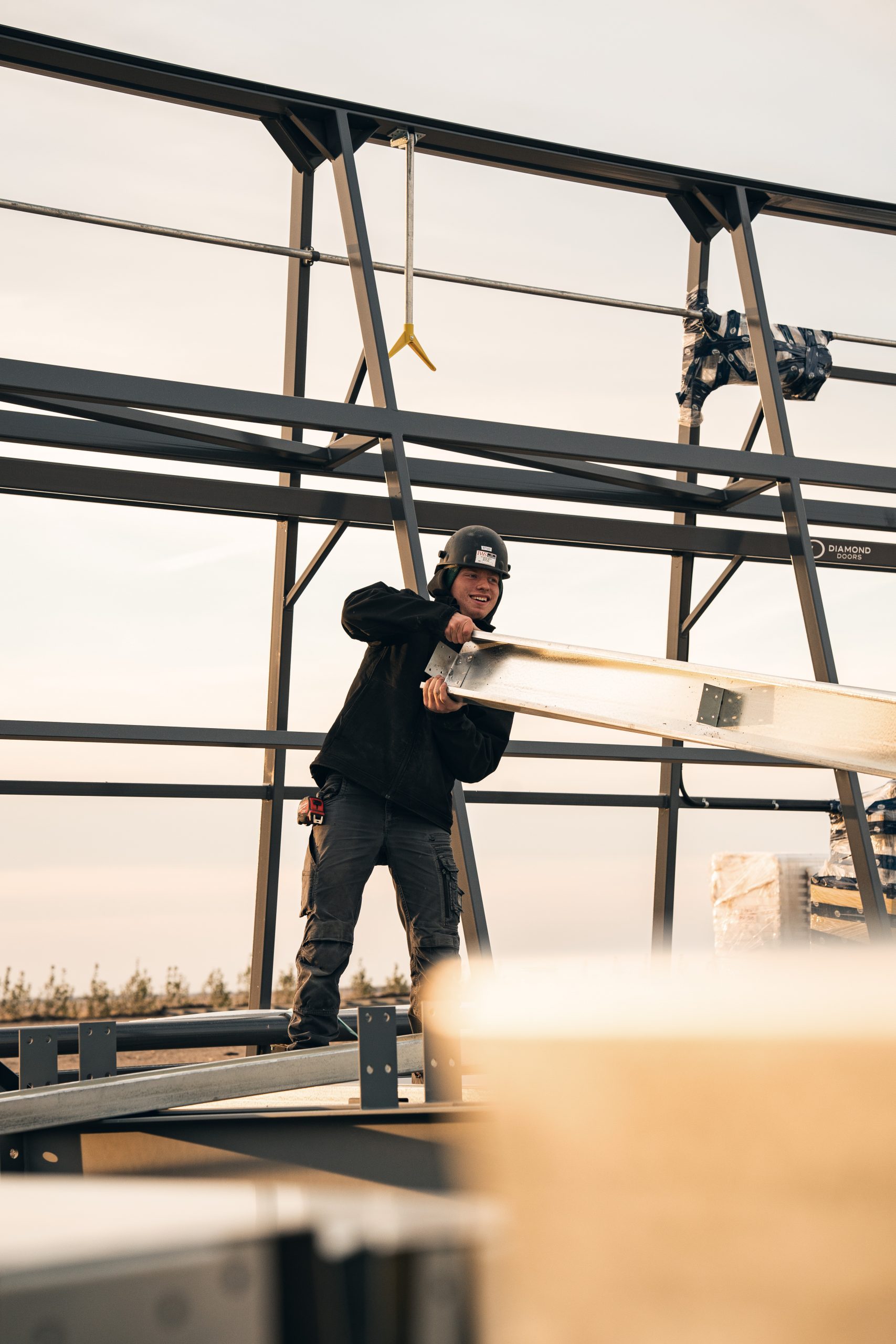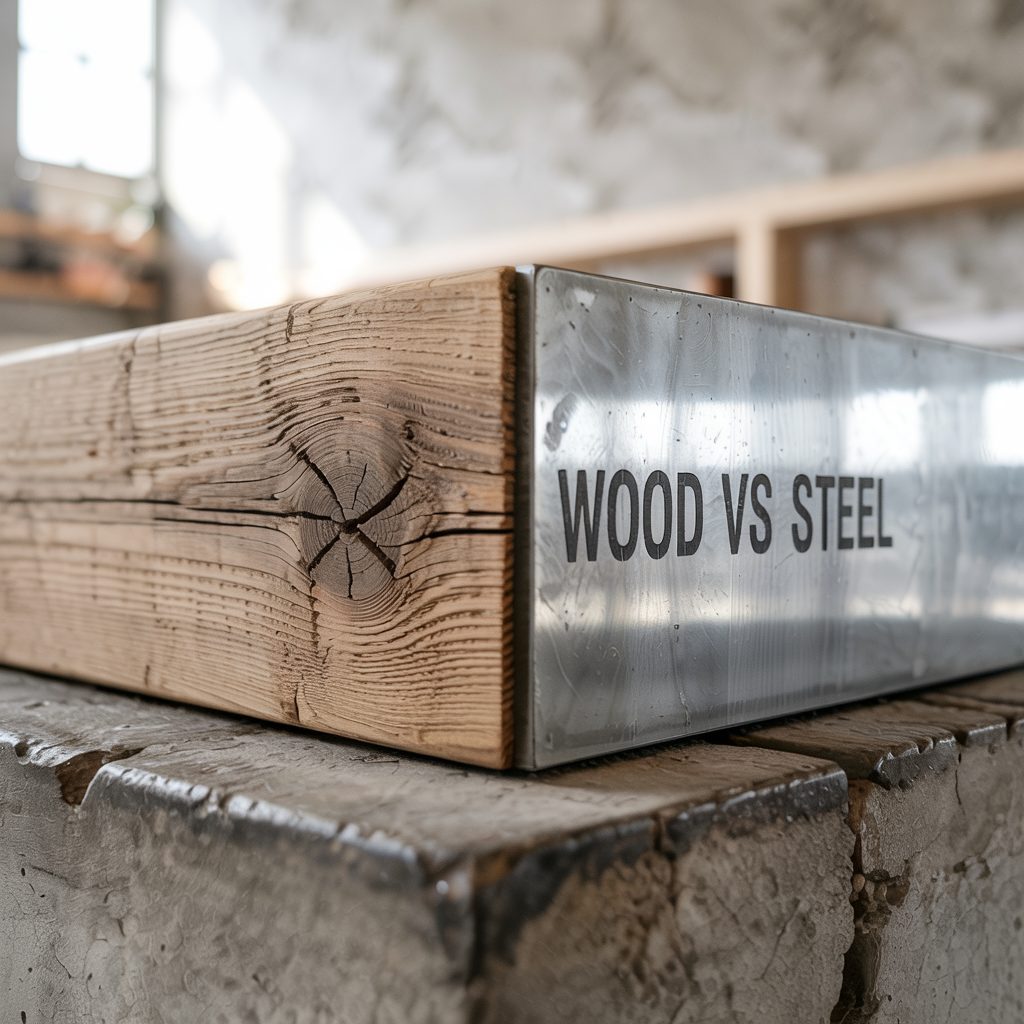When it comes to steel construction projects, the contractor you choose can make or break your investment. What might seem like a simple decision based on price tags often carries consequences that ripple throughout your project’s lifecycle and long after completion. The truth is that selecting the wrong steel contractor doesn’t just impact your immediate budget—it threatens the integrity of your entire investment.
The Real Price of “Budget-Friendly” Contractors
The most significant hidden costs of poor contractor selection often reveal themselves months or years after project completion. Water leaks around windows or on roofs frequently top the list of quality failures that demand expensive remediation.
If you don’t trim out your window with proper flashing for water to deflect away, it will leak and cause water in the wall costing minimum $1,000 to come out and repair per window. Multiply that across dozens of windows in a commercial project, and you’re facing repair costs that could easily exceed your initial “savings.”
We’ve witnessed numerous cases where customers chose contractors based solely on lower bids, only to end up paying almost double the original price when they had to hire another contractor to fix or completely replace substandard work. These aren’t isolated incidents—they represent a pattern that plays out consistently when decision-makers prioritize initial cost over demonstrated quality.
Your project deserves better than becoming another cautionary tale.
Quality Indicators That Truly Matter
When evaluating potential steel contractors, customer reviews provide valuable insights, but they’re just the starting point. The real differentiators exist in the tangible quality markers that separate exceptional contractors from merely adequate ones.
Four specific quality indicators deserve your attention during site visits to previous projects:
Building straightness stands as the most immediate visual indicator of craftsmanship. Even minor deviations from true vertical and horizontal lines compound over time, potentially compromising structural integrity and creating operational challenges for building occupants.
Trim detail quality might seem cosmetic, but it reveals a contractor’s commitment to precision. Properly executed trim work protects the building envelope while demonstrating attention to detail that typically extends throughout the entire project.
Sheet alignment may appear technical, but properly aligned sheets are essential for both aesthetic quality and weather resistance. Misalignments create weak points where moisture can penetrate and cause accelerated deterioration.
Water drainage systems represent perhaps the most critical element. A properly designed and implemented drainage system prevents moisture intrusion that can compromise structural elements and lead to mold, corrosion, and premature failure of building systems.
These factors aren’t subjective—they’re visible evidence of a contractor’s standards and workmanship that directly impact your building’s longevity.
How Technical Expertise Impacts Structural Integrity
Technical precision in steel construction isn’t just about aesthetics—it’s about safety and structural performance that can impact your project for decades.
Building squareness represents a fundamental aspect of proper steel construction that requires experience and technical knowledge. Even minor deviations from square can create cascading problems throughout the structure, affecting everything from roof systems to interior finishes.
Proper bolt torquing may seem like a basic requirement, but achieving the right torque specification requires both proper equipment and trained personnel. Under-torqued connections create movement and potential failure points, while over-torqued connections can damage materials and compromise connection strength.
Adherence to engineered drawings isn’t optional—it’s essential for structural performance and code compliance. Expert contractors understand how each element in the drawings contributes to the overall structural system and ensure precise implementation.
When contractors lack expertise in these technical areas, buildings may pass initial inspections but develop serious issues over time. The differences between marginally acceptable work and excellence in these technical areas often determine whether your building will serve you for decades or become a source of ongoing problems and expenses.
Effective Risk Mitigation Strategies
Protecting your investment starts long before construction begins. Implementing comprehensive safety measures for each trade involved in your project isn’t just about regulatory compliance—it’s about ensuring quality outcomes.
Start by requiring detailed safety protocols that address the specific risks associated with steel construction. These should include fall protection systems, equipment operation procedures, and material handling protocols. These measures protect both workers and your investment by preventing accidents that can cause project delays, quality compromises, and potential liability.
Request documentation of safety training specific to steel construction. Properly trained crews not only work more safely but typically deliver higher quality results with fewer errors that require correction.
Verify insurance coverage that exceeds minimum requirements, particularly for specialized steel construction activities. Adequate coverage protects all parties if unexpected issues arise.
Finally, establish clear communication channels for safety concerns that empower anyone on the project to identify potential hazards before they cause problems. This culture of safety awareness typically extends to quality awareness as well.
Communication: The Make-or-Break Factor
Even the most skilled contractors can’t overcome communication failures. The relationship between communication protocols and project outcomes is direct and unavoidable.
“We have seen where customers ordered material themselves and not on time, leading to installation delays,” notes an industry expert. These delays cascade through project schedules, creating inefficiencies and cost overruns that could have been prevented through better coordination.
Effective communication plans establish clear responsibilities for material ordering, delivery scheduling, and site preparation. They designate primary contacts, set expectations for response times, and create documentation trails that prevent misunderstandings.
Projects with robust communication protocols typically experience fewer delays, maintain better budget discipline, and achieve higher quality outcomes. Conversely, projects with informal or inconsistent communication frequently struggle with timeline slippage, scope creep, and quality issues that require expensive remediation.
Lessons From Successful Projects
The contrast between successful and troubled steel construction projects often comes down to three critical factors that successful project owners prioritize.
Communication heads the list, with successful projects establishing clear, consistent channels between all stakeholders from the outset. This goes beyond basic updates to include proactive planning discussions, potential challenge identification, and collaborative problem-solving.
Proper site preparation, particularly gravel placement and grading, creates the foundation for success. Inadequate site preparation can undermine even the most skilled construction efforts, leading to drainage issues, alignment problems, and excessive wear on equipment that extends construction timelines.
Having materials on-site before installation begins provides the buffer needed to identify and address any supply issues before they impact schedules. “Having material onsite beforehand so you can reorder on time if needed” represents a simple but powerful risk mitigation strategy that successful project owners consistently implement.
The most successful projects address these factors proactively through comprehensive pre-construction planning and site visits. Experienced contractors insist on “visiting them on the site or property where building will be put up and making sure that everything is there that’s needed and that we have access all the way around.”
These pre-construction evaluations identify potential challenges before they become expensive problems, allowing for adjustments that maintain quality, timelines, and budgets.
Industry Innovations Worth Watching
The steel construction industry continues to evolve, with innovations that offer significant advantages for projects that embrace them. Forward-thinking contractors stay ahead of these trends, offering clients enhanced efficiency and quality.
Pre-cut and pre-assembled components represent a significant advancement in the industry. “We see more and more pre-cut and pre-assembled parts/pieces being delivered to speed up installation time,” notes an industry leader. These factory-prepared elements typically offer superior quality control and precision compared to field-fabricated components.
Insulated metal panels exemplify this trend, providing thermal efficiency and moisture control while reducing installation time. Projects utilizing these innovative systems typically experience shorter construction periods, better energy performance, and fewer long-term maintenance issues.
Contractors who invest in these technologies and the training required to implement them effectively demonstrate a commitment to evolution and excellence that typically extends throughout their operations. When evaluating potential contractors, their adoption of appropriate innovations provides valuable insight into their overall approach to quality and efficiency.
Beyond Price: Making the Right Selection
Price-based selection represents perhaps the most common and costly mistake in contractor selection. “Cheaper is never the way to go. Don’t just look at the contract price but rather dive into the company and past projects to find the proper contractor for the project,” advises a construction veteran.
The reality is stark: “We have seen customers choosing other contractors because they’re cheaper and then end up paying almost double that original price for another contractor to come in and replace/fix the mistakes.” This pattern repeats itself across projects of every size and type.
A more effective approach evaluates the total cost of ownership rather than just initial price. This includes considering the contractor’s track record for completing projects on schedule, their warranty support, and the longevity of their previous work.
Visit completed projects at least 2-3 years old to see how they’ve performed over time. The true test of quality isn’t how a building looks at ribbon-cutting but how it performs for its owners and occupants over years of service.
Request references specifically about post-construction support and responsiveness. Quality contractors stand behind their work long after final payment.
Review the contractor’s financial stability to ensure they’ll be available if warranty issues arise. The lowest-priced bid offers little value if the contractor isn’t around to address problems that emerge after completion.
Protecting Your Investment Through Smart Selection
Your steel construction project represents a significant investment that deserves protection through strategic contractor selection. The hidden costs of poor contractor choice often far exceed any initial savings, manifesting as repair expenses, operational inefficiencies, and accelerated deterioration.
By focusing on demonstrated quality, technical expertise, communication effectiveness, and appropriate innovation adoption, you can identify contractors capable of delivering excellence rather than just adequacy. This approach protects not just your initial investment but the long-term value and functionality of your project.
Remember that today’s decisions about contractor selection will impact your project for decades to come. Choose partners who demonstrate the commitment, capability, and track record needed to transform your vision into reality without compromise.
Your project deserves nothing less than excellence. Accept nothing less from your steel contractor.



